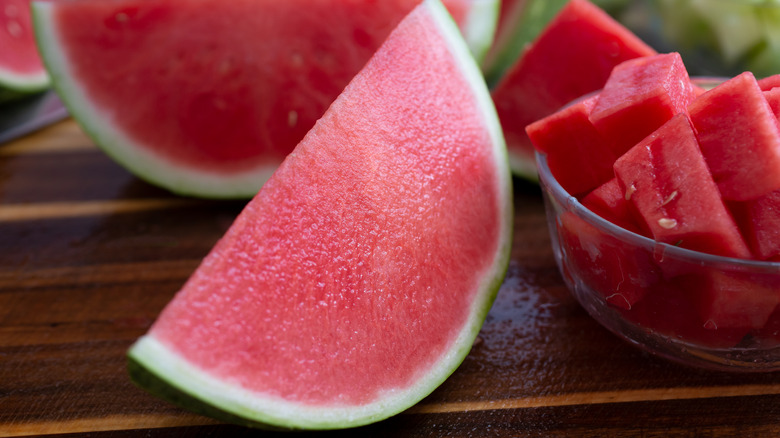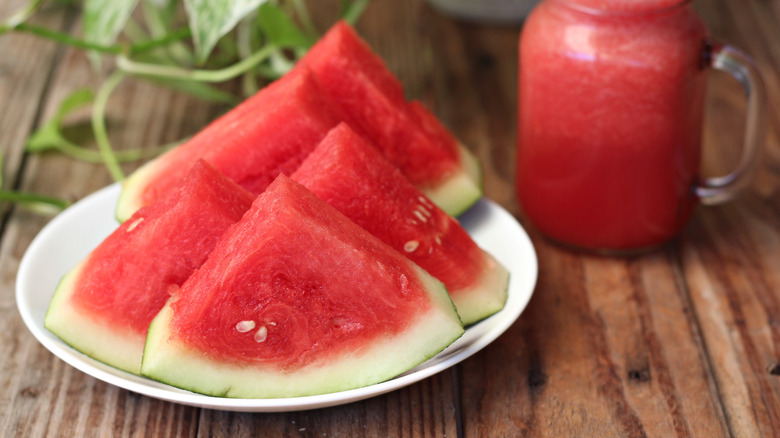The Science Behind Seedless Watermelons
There are many things to love about watermelons, particularly when it is hot and muggy outside, and if we have to work through a minefield of seeds, then so be it. And because we were taught to think that seeds were a plant's way of ensuring its own survival, we can be forgiven for thinking that seedless watermelons go against the laws of nature. But food science proves that we are mistaken.
Sites like Science World point out that like humans, watermelons have two sets of 11 chromosomes each, or 22 chromosomes altogether. In order to create seedless watermelons, a chemical called colchicine is added to watermelon cells as they are splitting, in order to create a different kind of watermelon, known as a tetraploid, which has double the number of chromosomes: 44. This tetraploid is then cross-bred with the original 22-chromosome fruit known as a diploid to create a triploid — a 33-chromosome fruit, which might have the ability to form little white seeds — but these seeds cannot reproduce and are classed as "sterile." To a watermelon, this means losing the ability to make seeds that can be cultivated.
The National Watermelon Promotion Board further points out that because two parents produce an offspring, they each contribute half of their chromosomes, which is why a seedless melon has 33 chromosomes, not 66. The site also compares the seedless watermelon to a mule, which happens when a horse is bred with a donkey.
Seedless watermelons are not genetically modified
While it is true that there is some form of chemical intervention that happens in order to create seedless watermelons, sites like Gardening Know How say these fruits are not genetically modified. Instead, seedless watermelons are the end-product of cross-breeding, where one type of watermelon breeds with another, and as pollen is spread around either with the help of bees or humans. This is why it is important to plant both types of watermelon close to each other in order for pollination to occur, per Michigan State University.
This may sound like a hefty, complicated process, but it is possible for home gardeners to take up the challenge of growing their own seedless watermelon by planting seeds in soil at the proper temperature and with staggered spacing. Seeds should also be planted at a ratio of one seeded watermelon variety to two seedless ones, and they need to be kept at a minimum temperature of 70 degrees Fahrenheit. If you have done the cultivation correctly, you should have a seedless fruit harvest 100 days after the plantings begin.
If growing your own isn't for you, you can pick up seedless watermelons from the supermarket, where you can expect to pay more, as seedless varieties are more of a challenge to grow. You can also give in and deal with watermelon seeds. As sites like Healthline point out, watermelon seeds are actually nutrient-dense and contain minerals like iron, magnesium, and zinc, which make seeded watermelons a nutritional bargain.

